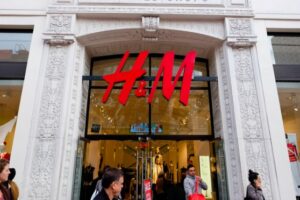Shein, a fast-fashion behemoth, is poised to reshape the retail industry yet again by applying for an IPO in the United States, signaling its ambition to solidify its already dominant position in the fashion sector. This move comes on the heels of monumental achievements, including a staggering $23 billion in revenue and $800 million in net profit in 2022, affirming Shein’s role as a frontrunner in the competitive world of online retail.
The company’s journey to a potential IPO in 2024 is a tale of strategic brilliance and adaptability, leveraging its vast presence in over 150 countries with the U.S. as its prime market. Through savvy engagement on social media platforms and an acute understanding of its Gen Z demographic, Shein has not just weathered industry storms but emerged as a model for success amid the complexities of global trade and ethical criticisms.
Shein’s Profit Surge in 2023
In 2023, Shein’s financial trajectory has been nothing short of remarkable, with the company’s revenue soaring by over 40% between January and September, reaching an unprecedented $24 billion. This surge not only underscores Shein’s dominant position in the fast-fashion industry but also marks a significant milestone as it eclipses the revenue of its closest rival, H&M. The company’s growth is further highlighted by its impressive jump from $22.7 billion in 2022, a 44% increase from the $15.7 billion recorded in 2021, showcasing a consistent upward trend in its financial performance.
Shein’s appeal among consumers is evident in its vast active shopper base, which is estimated at 88.8 million globally, with 17.3 million residing in the US. This expansive reach is further amplified by the app’s popularity, having been downloaded 200 million times in 2022 alone, securing its position as the most downloaded shopping app of that year. The company’s Gross Merchandise Value (GMV) in 2023, approximated at US$45 billion, coupled with a doubling of profits to approximately US$2 billion, highlights the efficiency of Shein’s business model and its adeptness at capitalizing on market trends.
Comparatively, Shein’s financial performance has outpaced several of its industry counterparts, including H&M, which reported profits of US$820 million in 2023. This disparity in financial success is a testament to Shein’s innovative approach to online retail, leveraging social media and understanding consumer preferences to drive sales. Despite a valuation adjustment from $100 billion in 2022 to $64 billion in 2023, Shein’s market share, particularly in the U.S., has more than doubled from March 2020 to 2022, indicating a robust and growing influence in the fast-fashion sector.
Comparative Industry Analysis
In the context of the fast fashion industry’s rapid evolution, Shein’s strategic approach sets it apart from traditional players like Zara and H&M. Shein’s unique model of releasing 500-2,000 new pieces daily at half the price of its competitors, coupled with a wide range of styles, colors, and patterns, has significantly disrupted the market dynamics. This strategy not only caters to the young buyers’ desire for trendy, affordable clothing but also positions Shein as a frontrunner in meeting consumer demands for newness and variety.
The company’s supply chain efficiency, highlighted by its small-batch approach and the ‘large-scale-automated test and re-order’ (LATR) model, allows for rapid testing of popular designs and scaling based on consumer response. This agility reduces inventory risks and enhances Shein’s ability to adapt to fast-changing fashion trends, giving it a competitive edge over traditional fast fashion brands that may rely on larger, riskier inventory bets.
The fast fashion market itself is on a trajectory of robust growth, with projections indicating a rise from $106.42 billion in 2022 to $184.96 billion by 2027. This growth is driven by factors such as the increasing adoption of trendy clothes by the youth, the rising influence of social media, and the growing demand for low-cost, high-fashion items. Shein’s success and expansion reflect these market trends, underscoring the brand’s ability to capitalize on digital transformation, sustainability concerns, and the shifting consumer behavior post-COVID-19 pandemic. As the market continues to evolve, Shein’s innovative business model and strategic positioning are likely to influence future trends and opportunities within the fast fashion industry.
The Role of Social Media and Business Strategy
Shein’s innovative approach to social media and business strategy has been pivotal in its explosive growth and engagement with Gen Z consumers. The company’s shift towards offering its supply chain as a service to outside brands and designers signifies a transformative move in its business model, emphasizing agility and responsiveness in the fast-fashion sector. By harnessing ‘real-time fashion,’ Shein swiftly identifies emerging trends and minimizes manufacturing cycles, ensuring a rapid transition from design to delivery. This approach is supported by an in-house design team and a comprehensive analysis of fashion trend data, enabling Shein to outpace competitors in bringing new styles to market.
Central to Shein’s market strategy is its targeted focus on Gen Z consumers worldwide, particularly those motivated by price. The brand’s omnichannel presence, spanning its website, app, and various social media platforms, is complemented by an extensive network of fashion influencers. High-profile collaborations with celebrities like Katy Perry and Hailey Bieber, alongside partnerships with micro-influencers across Instagram, YouTube, and TikTok, amplify Shein’s reach and resonance with young shoppers. The brand’s strategic use of social media, particularly its significant presence on TikTok under the hashtag ‘Sheinhaul,’ showcases its adeptness in creating content that aligns with the preferences and consumption habits of its target demographic.
Shein’s marketing prowess extends beyond influencer collaborations to include a robust affiliate program, inviting customers to earn commissions through social media promotion. This strategy, coupled with creative digital marketing tactics and an engaging approach to social media, underscores Shein’s understanding of Gen Z’s shopping behaviors. The absence of permanent brick-and-mortar stores, replaced by pop-up experiences in high-traffic cities, further illustrates Shein’s commitment to an innovative, digital-first approach. Through these strategic maneuvers, Shein has not only cemented its position as a leader in fast fashion but also set a new standard for engaging with the digitally savvy Gen Z market.
Challenges and Opportunities for the IPO
As Shein navigates its path toward a potential Initial Public Offering (IPO), a blend of challenges and opportunities emerge, each playing a pivotal role in shaping the company’s future financial landscape. Central to these challenges is the ongoing security review by China’s internet regulator, the Cyberspace Administration of China (CAC), focusing on Shein’s extensive supply chain operations within China. The CAC’s scrutiny extends to how Shein manages sensitive information regarding its employees, partners, and suppliers, aiming to prevent data breaches overseas. This investigation is critical, as Shein’s compliance with Chinese regulatory standards is a prerequisite for pursuing an IPO in the U.S. Adding complexity to Shein’s IPO journey are allegations of unethical practices, including design theft and violations of human rights, which the company has actively countered through robust social media campaigns and strategic marketing initiatives.
On the opportunity front, Shein explores a potential listing on the London Stock Exchange (LSE), a move that reflects both strategic foresight and adaptability amidst regulatory uncertainties in the U.S. This consideration is bolstered by productive discussions with the UK’s chancellor, signaling the UK government’s support for Shein’s IPO ambitions and its broader goal to enhance London’s status as a global financial hub. A successful listing in London could not only elevate Shein’s financial profile but also affirm London’s competitive edge in the global IPO market. However, lingering concerns about Shein’s transparency and labor practices in its supply chain pose significant hurdles, underscoring the need for meticulous compliance and ethical governance to secure investor confidence and regulatory approval.
In summary, Shein’s IPO trajectory is fraught with regulatory challenges and ethical controversies, from stringent scrutiny by Chinese authorities to global criticisms of its business practices. Yet, the company’s proactive measures to address these issues, combined with strategic explorations of alternative listing venues, highlight Shein’s resilience and adaptability. As Shein advances toward its IPO, the balance between overcoming these challenges and leveraging emerging opportunities will be crucial in determining its success in the competitive fast-fashion marketplace.




















2 thoughts on “Shein’s Profit Surge: A Detailed Look at the Fast-Fashion Retailer’s IPO Journey”